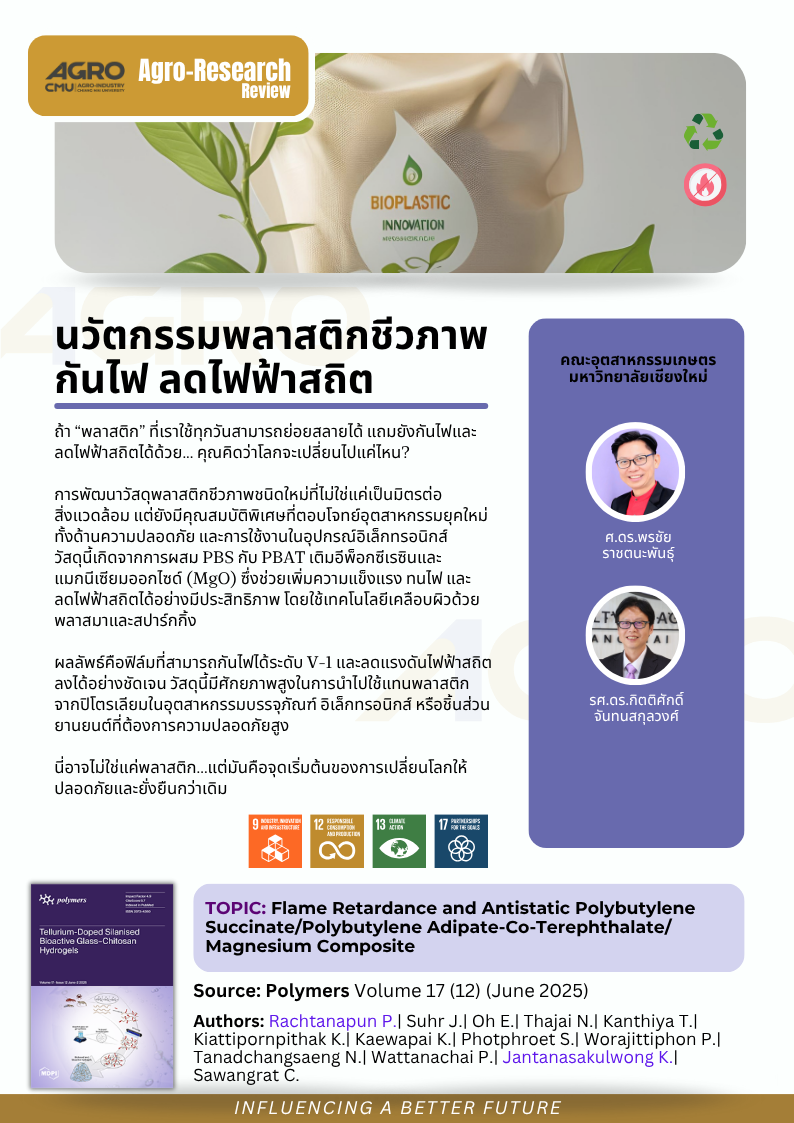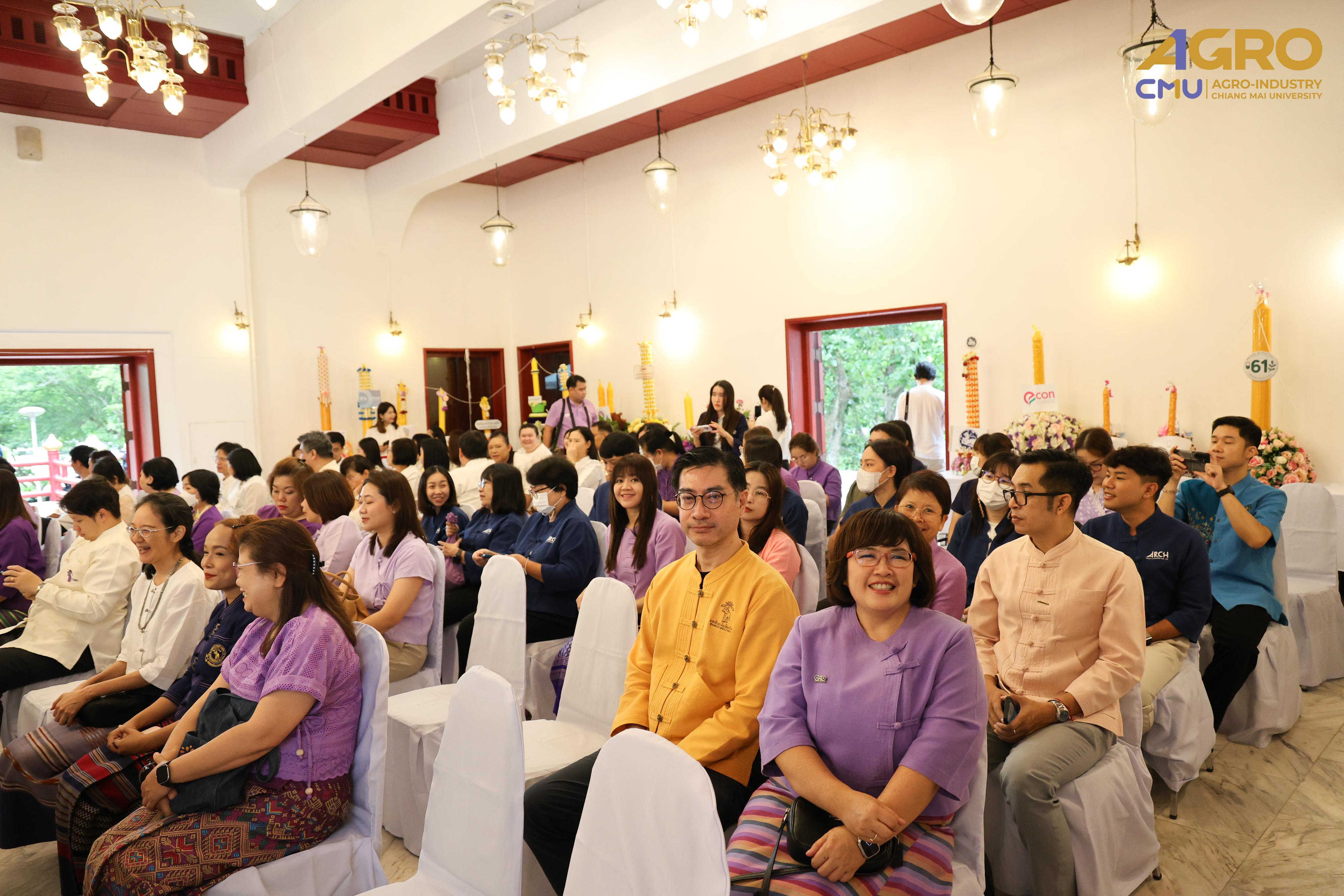
นวัตกรรมพลาสติกชีวภาพกันไฟ ลดไฟฟ้าสถิต
ถ้า “พลาสติก” ที่เราใช้ทุกวันสามารถย่อยสลายได้ แถมยังกันไฟและลดไฟฟ้าสถิตได้ด้วย... คุณคิดว่าโลกจะเปลี่ยนไปแค่ไหน?
การพัฒนาวัสดุพลาสติกชีวภาพชนิดใหม่ที่ไม่ใช่แค่เป็นมิตรต่อสิ่งแวดล้อม แต่ยังมีคุณสมบัติพิเศษที่ตอบโจทย์อุตสาหกรรมยุคใหม่ ทั้งด้านความปลอดภัยและการใช้งานในอุปกรณ์อิเล็กทรอนิกส์ วัสดุนี้เกิดจากการผสม PBS กับ PBAT เติมอีพ็อกซีเรซินและแมกนีเซียมออกไซด์ (MgO) ซึ่งช่วยเพิ่มความแข็งแรง ทนไฟ และลดไฟฟ้าสถิตได้อย่างมีประสิทธิภาพ โดยใช้เทคโนโลยีเคลือบผิวด้วยพลาสมาและสปาร์กกิ้ง ผลลัพธ์คือฟิล์มที่สามารถกันไฟได้ระดับ V-1 และลดแรงดันไฟฟ้าสถิตลงได้อย่างชัดเจน วัสดุนี้มีศักยภาพสูงในการนำไปใช้แทนพลาสติกจากปิโตรเลียมในอุตสาหกรรมบรรจุภัณฑ์ อิเล็กทรอนิกส์ หรือชิ้นส่วนยานยนต์ที่ต้องการความปลอดภัยสูง
นี่อาจไม่ใช่แค่พลาสติก...แต่มันคือจุดเริ่มต้นของการเปลี่ยนโลกให้ปลอดภัยและยั่งยืนกว่าเดิม
--
What if the plastic we use every day could biodegrade, resist fire, and reduce static electricity? How much safer and cleaner could our world become?
A research team from Chiang Mai University has developed a new type of bioplastic material that’s not only environmentally friendly but also tailored for modern industrial needs—especially in safety-critical applications like electronics and automotive parts. This innovative material is created by blending PBS with PBAT, enhanced with epoxy resin and magnesium oxide (MgO). These additives significantly improve strength, flame resistance, and antistatic properties. Surface treatments using plasma technology and sparking methods further boost its performance. The result? A film that achieves a V-1 flame retardancy rating and shows a clear reduction in surface static voltage. With its high potential to replace petroleum-based plastics, this bioplastic could be a game-changer for packaging, electronics, and automotive industries.
This might not be just another plastic… It could be the beginning of a safer, more sustainable world.
Topic: Flame Retardance and Antistatic Polybutylene Succinate/Polybutylene Adipate-Co-Terephthalate/Magnesium Composite
Authors: Rachtanapun P.| Suhr J.| Oh E.| Thajai N.| Kanthiya T.| Kiattipornpithak K.| Kaewapai K.| Photphroet S.| Worajittiphon P.| Tanadchangsaeng N.| Wattanachai P.| Jantanasakulwong K.| Sawangrat C.
Abstract:
Antistatic and anti-flame biodegradable polymer composites were developed by melt-blending polybutylene succinate (PBS) with epoxy resin, polybutylene adipate-co-terephthalate (PBAT), and MgO particles. The composite films were prepared using a two-roll mill and an extrusion-blown film machine. Plasma and sparking techniques were used to improve the antistatic properties of the composites. The PBS/E1/PBAT/MgO 15% composite exhibited an improvement in V-1 rating of flame retardancy, indicating an enhancement in the flame retardancy of biodegradable composite films. The tensile strength of the PBS/PBAT blend increased from 19 MPa to 25 MPa with the addition of 1% epoxy due to the epoxy reaction increasing compatibility between PBS and PBAT. The PBS/E1/PBAT and PBS/E1/PBAT blends with MgO 0, 0.5, and 1% showed increases in the contact angle to 80.9°, 83.0°, and 85.7°, respectively, because the epoxy improved the reaction between PBS and PBAT via the MgO catalyst effect. Fourier-transform infrared spectroscopy confirmed the reaction between the epoxy groups of the epoxy resin and the carboxyl end groups of PBS and PBAT by new peaks at 1246 and 1249 cm−1. Plasma technology (sputtering) presents better antistatic properties than the sparking process because of the high consistency of the metal nanoparticles on the surface. This composite can be applied for electronic devices as sustainable packaging.
Keywords: fiber; plasma; epoxy; reaction
View at publisher: https://www.mdpi.com/2073-4360/17/12/1675
#agrocmu #CMU



